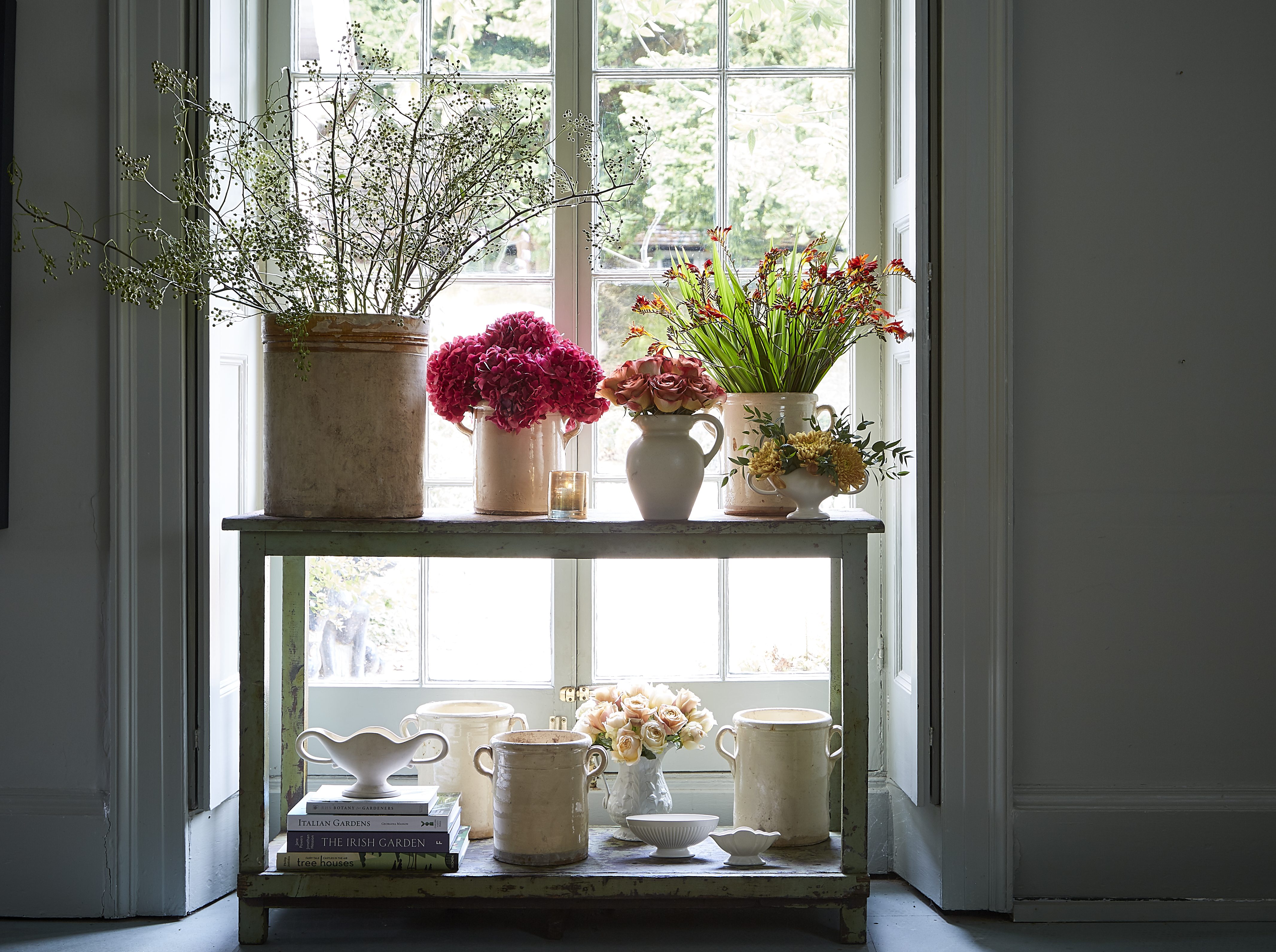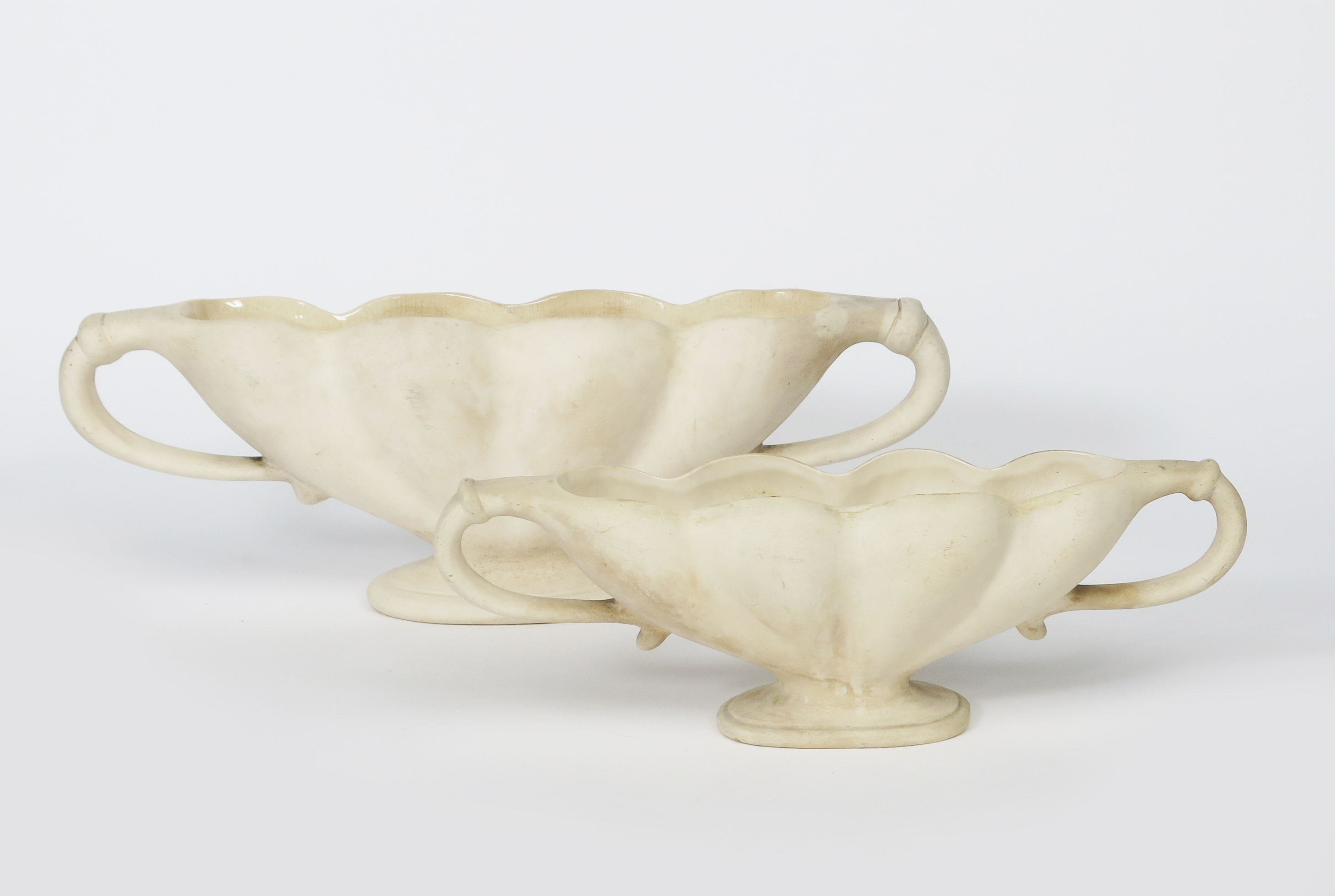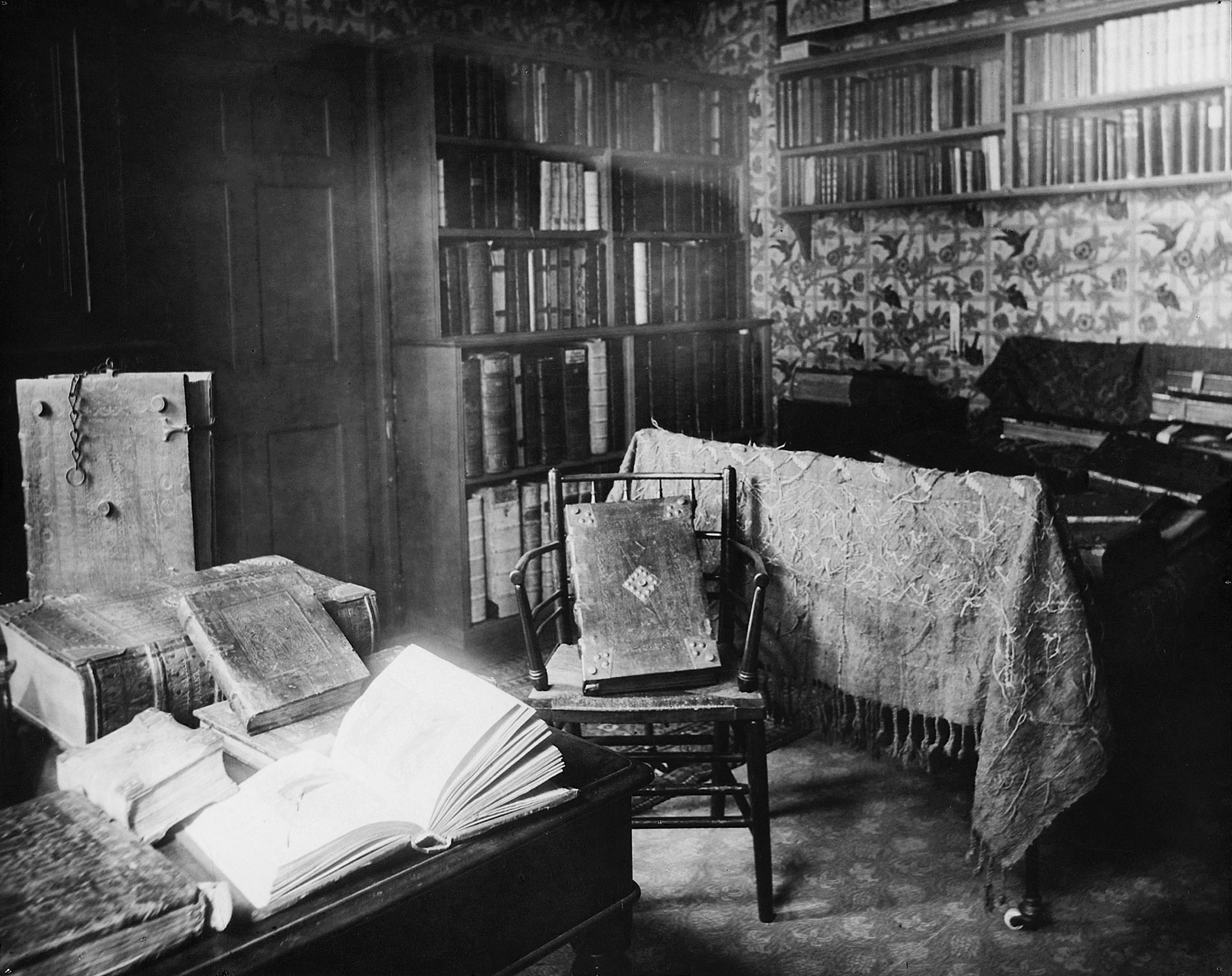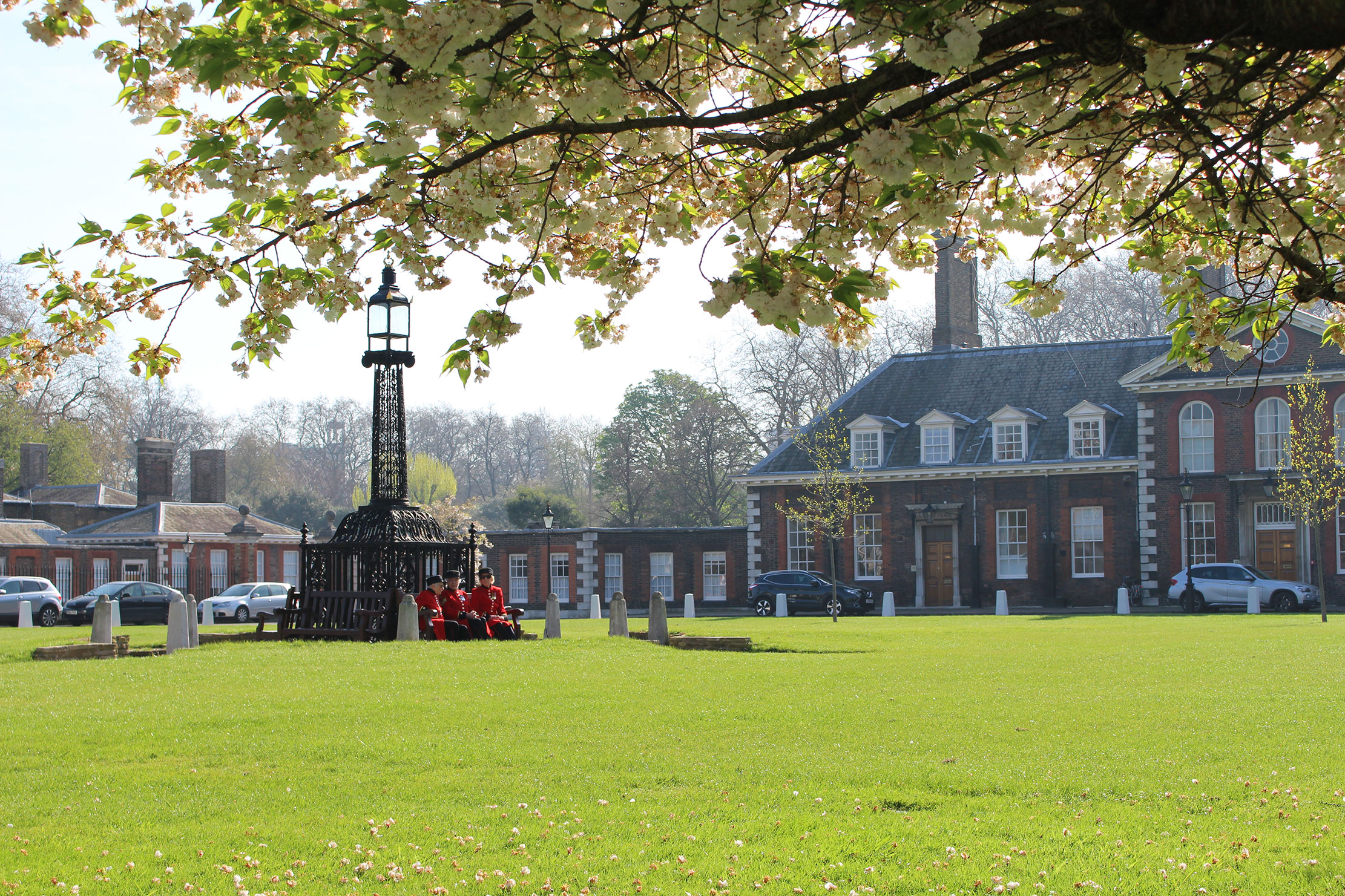Constance Spry pottery: From charity-shop staple to the peak of chic
Catriona Gray considers the legacy of one of Britain’s most innovative florists, whose vases have have become modern collectors’ items.


For those well versed in the language of flowers, the name Constance Spry still looms large. From the late 1920s up until her death in 1960, she dominated British floristry, creating displays that were sophisticated, daring and always unexpected. She would heap together masses of a single flower, presenting urns brimming with a profusion of scented lilac or Portuguese laurel, or she might offer up a huge, lavish arrangement of blooms, as artful and layered as a still life by a Dutch Master.
Plants deemed more suitable for the kitchen were put on show: daring concoctions of curly-leaved kale, huge stems of rhubarb and silvery fronds of globe artichoke. She shunned ‘proper’ vases, instead raiding her clients’ cupboards for suitable vessels, repurposing everything from meat platters to baking tins.
Early on in her career, frustrated with being unable to buy the sort of vases she wanted, she designed her own, the best known of which were made by Fulham Pottery. They were often boat-shaped or wide-necked, unlike their narrow-mouthed, Edwardian predecessors.

‘Their shapes take you in a different direction,’ notes the plantsman and florist Charlie McCormick. ‘They encourage that sort of informal, asymmetrical arrangement for which Spry was famous and is once again very popular in the floral world. Although they went right out of fashion, they’re now right back in.’
The florist Nikki Tibbles was an early pioneer of this trend – although Minimalism reigned at the time, her company Wild at Heart became known for its lively, maximalist bouquets. ‘To me, Constance Spry is the original florist, sourcing from gardens, hedgerows and vegetable patches,’ she enthuses.
Over the past two decades, she’s accumulated a large quantity of Spry’s Fulham-ware, steadily acquiring the pieces that spoke to her. ‘I display them in large groups of 30 or 40, piled high on shelves in my home in the country – they’re always on show.’

Vic Brotherson started out at Wild at Heart and now runs a thriving floristry business of her own, Scarlet & Violet. The window of her London shop is often heaped high with the containers the company uses for events, many of them by Spry. ‘They’re so elegant – the weight of the vases and the continuous, fluid lines are very satisfying,’ explains Mrs Brotherson. ‘Although I’ve always collected vintage vases, I didn’t get my first Con-stance Spry until I started Scarlet & Violet. It’s matte black and scalloped, with double handles, and I keep it on my chimneypiece at home in pride of place.’
Exquisite houses, the beauty of Nature, and how to get the most from your life, straight to your inbox.
As recently as a decade ago, Spry’s vases were considered passé and could be found in charity shops across the country, but, nowadays, they are highly sought-after – depending on the style and age, they can fetch anything up to £1,000. Mr McCormick’s collection numbers some 50 pieces and he’s noticed how the market has changed in the past few years: ‘The signed Constance Spry vases have always been collectable, but, recently, they’ve gone bonkers.’
It’s rather fitting that Spry is having such a renaissance – she was a trailblazing figure, a businesswoman with the eye of an artist. Born in 1886 into a working-class family, she initially wanted to be a nurse. Following an ill-fated marriage to an Irish coal-mine manager, she relocated to London with her young son in the last years of the First World War, becoming the headmistress of an East End school.
She first began arranging flowers for her friends, which led to a job decorating the windows of Atkinsons, a smart new perfumery on Old Bond Street. Her dramatic installations were such a sensation that police were regularly summoned to move along the crowds gathered outside.
By this point, she had met her long-term partner, ‘Shav’ Spry. He was married already and, although she took his name, there is no record of them having ever form-ally wed. He helped her launch her fledgling flower shop, which rapidly expanded – early customers included Wallis Simpson and the then Prince of Wales.
As Spry’s fame grew, her relationship with Shav faltered. Both were unfaithful and Constance began a four-year affair with the artist Hannah Gluckstein, better known as Gluck. During the summer of 1932, the two women went on holiday to Tunisia and Spry became fascinated by the Roman, Greek and Phoenician pots that she spotted in the local museums. She asked Gluck to sketch them for her and used them as inspiration for her own designs – these classical shapes have since become hallmarks of her ceramics.
Spry’s energy and enthusiasm were extraordinary – not only did her business grow to 70 employees and a shop in New York, but she was a prolific journalist and writer of books. She taught floristry and founded a school of domestic science in Berkshire, in collaboration with Rosemary Hume (the co-author of that culinary bible The Constance Spry Cookery Book).
Her career peaked in 1953, with The Queen’s Coronation. Spry masterminded the flowers in Westminster Abbey, helped with the street displays and even roped in Hume to assist her with the post-ceremony lunch – the pair of them can be credited with the invention of coronation chicken.
Despite Spry’s colourful life, few collectors of her pottery are aware of her story when they first discover her vases, especially if they aren’t professional florists. ‘I stumbled across my first vase in a small antiques shop in Suffolk about 12 years ago, where it was covered in dust and pencil marks,’ recalls Paula Sutton, who lives in a Georgian house in rural Norfolk.
‘It looked like something an ancient Greek statue of a goddess might have at her feet – the latent art historian in me was drawn to that before I knew its history.’
Intrigued, Mrs Sutton began to keep an eye out for the vases and now has them displayed around her house. ‘The wonderful thing about them is that they look beautiful with or without flowers.’
For Susanna White, Spry’s vases conjured up memories of her great-grandmother, who had one prominently displayed in her drawing room, surrounded by fine 18th-century china. However, it wasn’t until she was married with a house of her own that she saw their appeal.
‘Although I’d been given endless glass vases as wedding presents, none of them would fit on the chimneypiece, so I went on the hunt for a Spry vase,’ remembers Mrs White. ‘From then on, I was hooked. As my collection grew, people started to comment on it and ask if I could find pieces for them.’ She now sells Spry’s Fulham-ware online, as part of her design business Whiteworks.
Fledgling collectors should note that the unglazed specimens are the most sought- after – they’re the hardest to find, the most prone to damage and command the highest prices. Few of them survive unblemished – this is because Spry encouraged customers to paint them to match their interiors, although she had very strong opinions as to what shades were acceptable. ‘Egg-shell blue, a dusty pink and soft lime-green are three colours that meet with general approval and look well,’ she wrote in her 1951 book Summer & Autumn Flowers. She wasn’t a fan of high-gloss finishes, preferring the softer matte effect of powdery distemper.

During her lifetime, Spry seemed to give very little thought to the vases that she designed. There are few references to them in her letters or biographies – she appeared to view them simply as vessels to display her art – and yet, because of the ephemeral nature of flowers, much of Spry’s work has been lost forever.
Of that which has been recorded, neither the dated photographs or the illustrations accurately record the sensory impact of her creations – the brilliant colours, the heady fragrances and the dramatic scale. How-ever, her vases survive, a scattered fleet of relics that invite their owners to fill them with blooms and to celebrate Spry’s legacy with their own fleeting vision of beauty.

How William Morris transformed his London home: 'Let us hope we shall all grow younger there, my dear'
William Morris's London home was just as remarkable as his country houses, as Clive Aslet discovered during a visit to

Life at the Royal Hospital Chelsea: From pensioners pumping iron to ‘Chelsea Chests’

What to look out for at Masterpiece, from speedboats and cabinets to paintings and books
Masterpiece takes place this week — June 27 to July 3 — and Huon Mallalieu can hardly wait. Here are some of

Antique dealers and interior designers on the objects they would never sell
When wonderful objects come into your hands on a daily basis, how does something become so special that you couldn't
Country Life is unlike any other magazine: the only glossy weekly on the newsstand and the only magazine that has been guest-edited by His Majesty The King not once, but twice. It is a celebration of modern rural life and all its diverse joys and pleasures — that was first published in Queen Victoria's Diamond Jubilee year. Our eclectic mixture of witty and informative content — from the most up-to-date property news and commentary and a coveted glimpse inside some of the UK's best houses and gardens, to gardening, the arts and interior design, written by experts in their field — still cannot be found in print or online, anywhere else.
